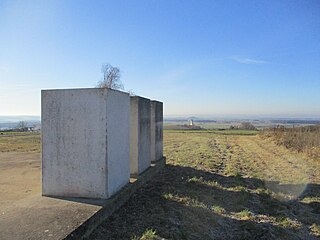
The future is the time after the past and present. Its arrival is considered inevitable due to the existence of time and the laws of physics. Due to the apparent nature of reality and the unavoidability of the future, everything that currently exists and will exist can be categorized as either permanent, meaning that it will exist forever, or temporary, meaning that it will end. In the Occidental view, which uses a linear conception of time, the future is the portion of the projected timeline that is anticipated to occur. In special relativity, the future is considered absolute future, or the future light cone.

Ladakh is a region administered by India as a union territory which constitutes a part of the larger Kashmir region and has been the subject of dispute between India, Pakistan, and China since 1947. Ladakh is bordered by the Tibet Autonomous Region to the east, the Indian state of Himachal Pradesh to the south, both the Indian-administered union territory of Jammu and Kashmir and the Pakistan-administered Gilgit-Baltistan to the west, and the southwest corner of Xinjiang across the Karakoram Pass in the far north. It extends from the Siachen Glacier in the Karakoram range to the north to the main Great Himalayas to the south. The eastern end, consisting of the uninhabited Aksai Chin plains, is claimed by the Indian Government as part of Ladakh, and has been under Chinese control since 1962.

Zanskar, Zahar (locally) or Zangskar, is a tehsil of Kargil district, in the Indian union territory of Ladakh. The administrative centre is Padum. Zanskar, together with the neighboring region of Ladakh, was briefly a part of the kingdom of Guge in Western Tibet. Zanskar lies 250 km south of Kargil town on NH301.

Ziauddin Sardar is a British-Pakistani scholar, award-winning writer, cultural critic and public intellectual who specialises in Muslim thought, the future of Islam, futurology and science and cultural relations. The author and editor of more than 50 books, Prospect magazine has named him as one of Britain's top 100 public intellectuals and The Independent newspaper calls him: 'Britain's own Muslim polymath'.
Futurists are people whose specialty or interest is futurology or the attempt to systematically explore predictions and possibilities about the future and how they can emerge from the present, whether that of human society in particular or of life on Earth in general.

Futures studies, futures research, futurism or futurology is the systematic, interdisciplinary and holistic study of social and technological advancement, and other environmental trends; often for the purpose of exploring how people will live and work in the future. Predictive techniques, such as forecasting, can be applied, but contemporary futures studies scholars emphasize the importance of systematically exploring alternatives. In general, it can be considered as a branch of the social sciences and an extension to the field of history. Futures studies seeks to understand what is likely to continue and what could plausibly change. Part of the discipline thus seeks a systematic and pattern-based understanding of past and present, and to explore the possibility of future events and trends.
Local Futures is a non-profit organization whose purpose is to raise awareness about what it identifies as the root causes of contemporary social, environmental, and economic crises.
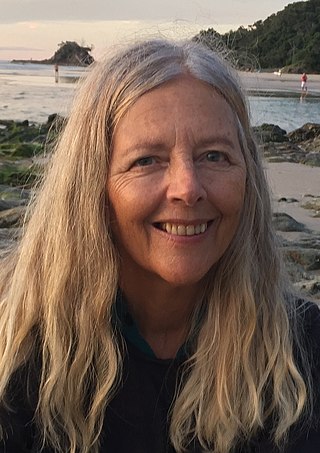
Helena Norberg-Hodge is founder and director of Local Futures, previously known as the International Society for Ecology and Culture (ISEC). Local Futures is a non-profit organization "dedicated to the revitalization of cultural and biological diversity, and the strengthening of local communities and economies worldwide."

Ladakh has a long history with evidence of human settlement from as back as 9000 b.c. It has been a crossroad of high Asia for thousands of years and has seen many cultures, empires and technologies born in its neighbours. As a result of these developments Ladakh has imported many traditions and culture from its neighbours and combining them all gave rise to a unique tradition and culture of its own.
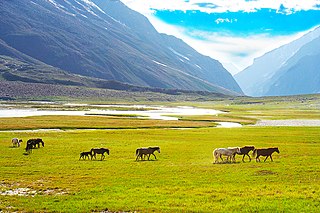
The Suru Valley is a valley in the Kargil District in the Union Territory of Ladakh, India. It is drained by the Suru River, a tributary of the Indus River. The valley's most significant town is Sankoo.
Walter Truett Anderson is an American political scientist, social psychologist, and author of numerous non-fiction books and articles in newspapers and magazines.
Brokskat or Minaro is an endangered Indo-Aryan language spoken by the Brokpa people in the lower Indus Valley of Ladakh and its surrounding areas. It is the oldest surviving member of the ancient Dardic language. It is considered a divergent variety of Shina, but it is not mutually intelligible with the other dialects of Shina. It is only spoken by 2858 people in Ladakh and 400 people in the adjoining Baltistan, part of Pakistan-administered Kashmir.
Postdevelopment theory holds that the whole concept and practice of development is a reflection of Western-Northern hegemony over the rest of the world. Postdevelopment thought arose in the 1980s out of criticisms voiced against development projects and development theory, which justified them.
Sindhu Darshan Festival is a festival held in Leh, Ladakh, India. The festival is held every year in June on the full moon day of Guru Purnima. On this day, devotees gather near the banks of the Indus River, which is known as the Sindhu River in India. Since 1997, the festival has stretched for three days, attracting large number of foreign and domestic tourists.
Counter-development is a strategy and world-view advocated by Helena Norberg-Hodge and the Indian organization Ladakh Ecological Development Group (LEDeG). In her book Ancient Futures, Helena Norberg-Hodge entails "traditional" ways of life employed by the people of Ladakh. A broad base of people need to adopt counter-development, to check and reverse the tide of environmental destruction, social fragmentation, and to the concentration of power and wealth in the hands of transnational corporations.
Causal layered analysis (CLA) is a technique used in strategic planning, futures studies and foresight to more effectively shape the future. The technique was pioneered by Sohail Inayatullah, a Pakistani-Australian futures studies researcher.
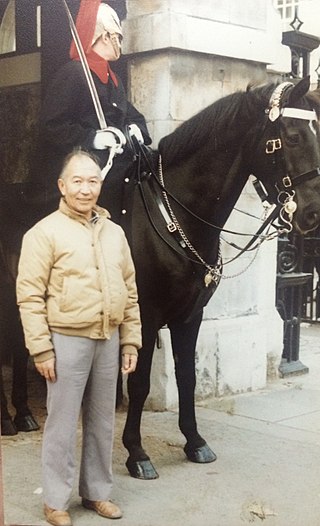
Tashi Rabgias Indian scholar and historian who belonged to the Union Territory of Ladakh. He was a scholar of Mahayana and Vajrayana Buddhism. He commanded great expertise over the Bhoti language. He has many books to his credit. He has a collection of more than 200 folk songs for which he was awarded a Robe of Honour by the Art Culture and Language Department, Govt of Jammu and Kashmir.
Dah is a panchayat village in the Leh district of Ladakh, India. It is the most prominent of all the Brokpa settlements, other than Dah, it has five hamlets: Biama, Baldes, Sannit, Pardos, and Lastyang. It is located in lower Indus valley of Ladakh in the Khalsi tehsil.
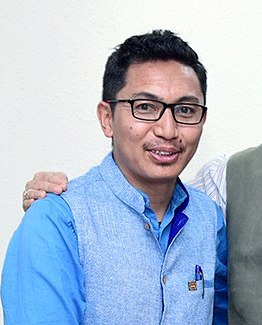
Jamyang Tsering Namgyal is an Indian politician and Member of Parliament from Ladakh, India's largest parliamentary seat geographically. Namgyal was elected, on 9 November 2018, to be the youngest and 8th Chief Executive Councillor (CEC) of Ladakh Autonomous Hill Development Council, Leh. He belongs to the Bharatiya Janata Party (BJP).
The Ladakh Chronicles, or La-dvags-rgyal-rabs, is a historical work that covers the history of Ladakh from the beginnings of the first Tibetan dynasty of Ladakh until the end of the Namgyal dynasty. The chronicles were compiled by the Namgyal dynasty, mostly during the 17th century, and are considered the primary written source for Ladakhi history.










